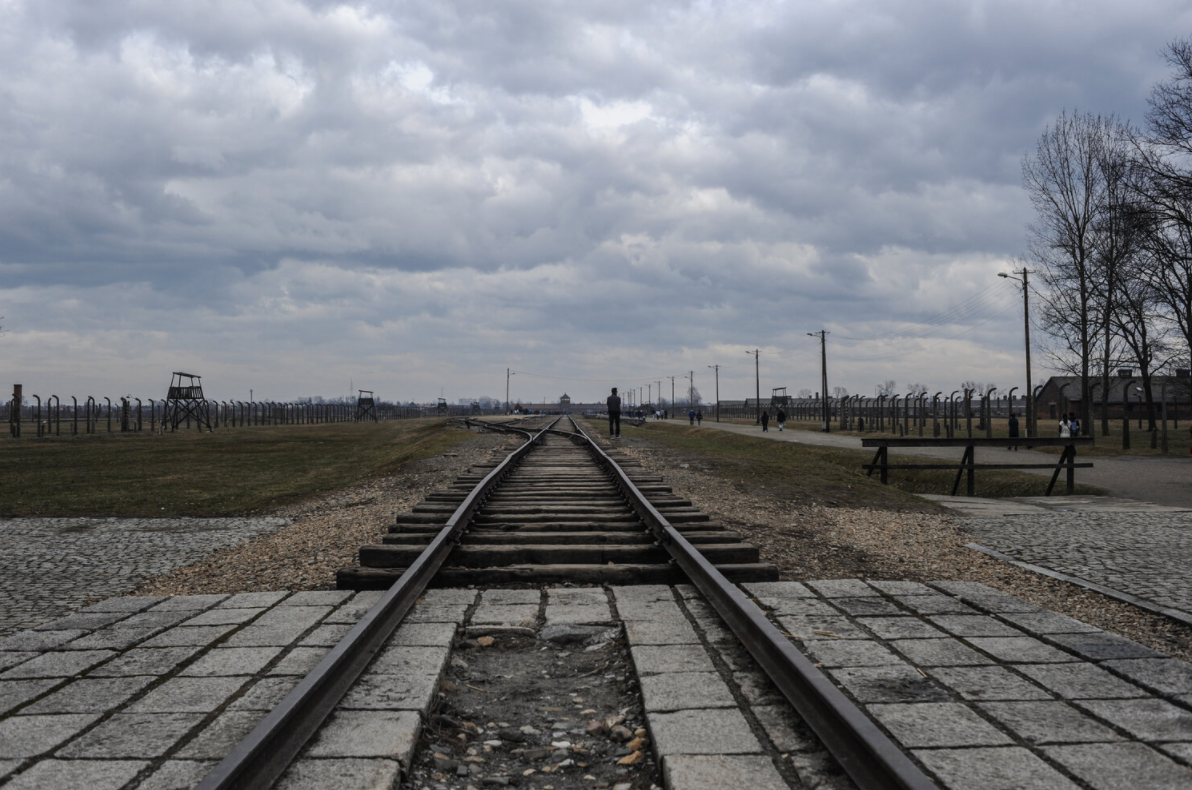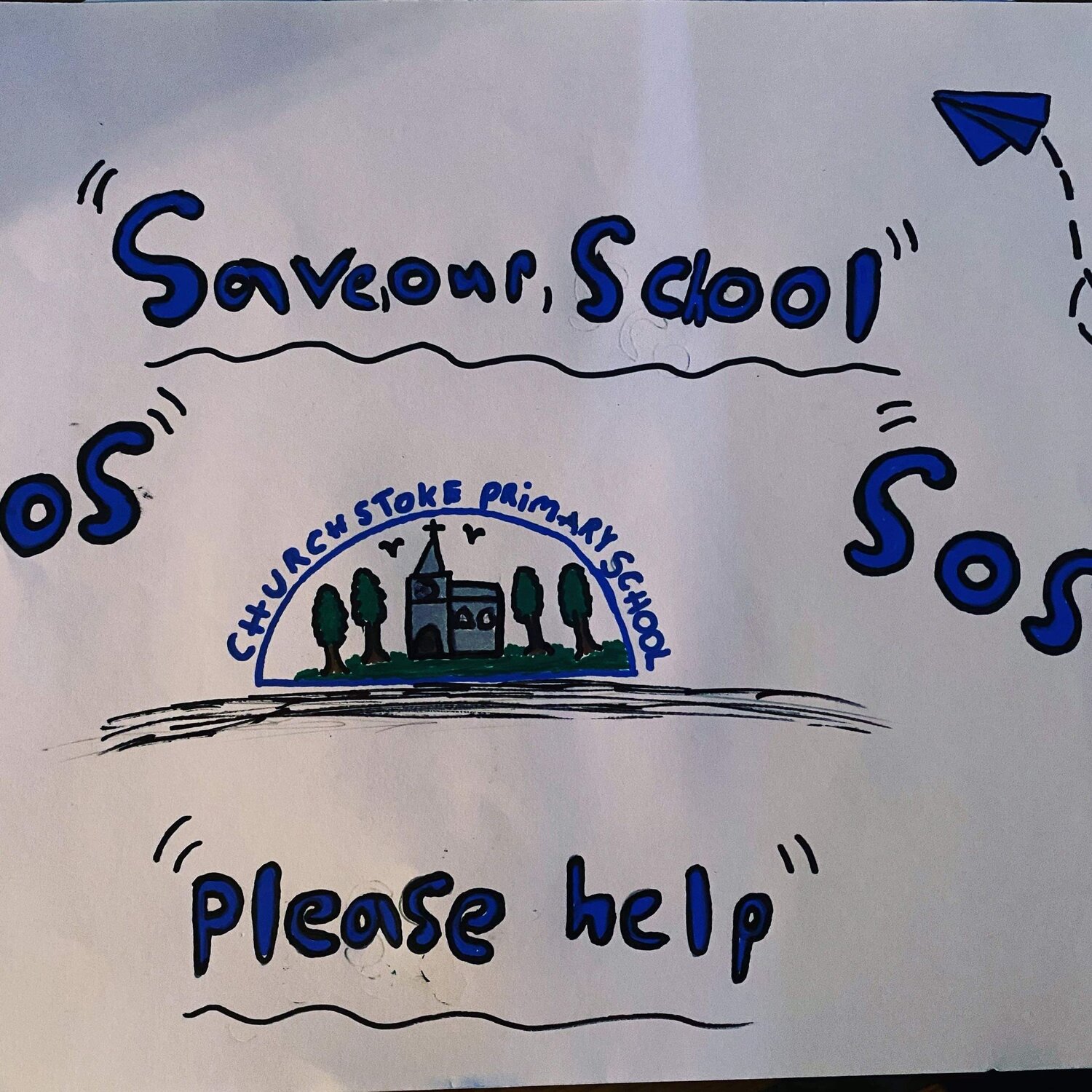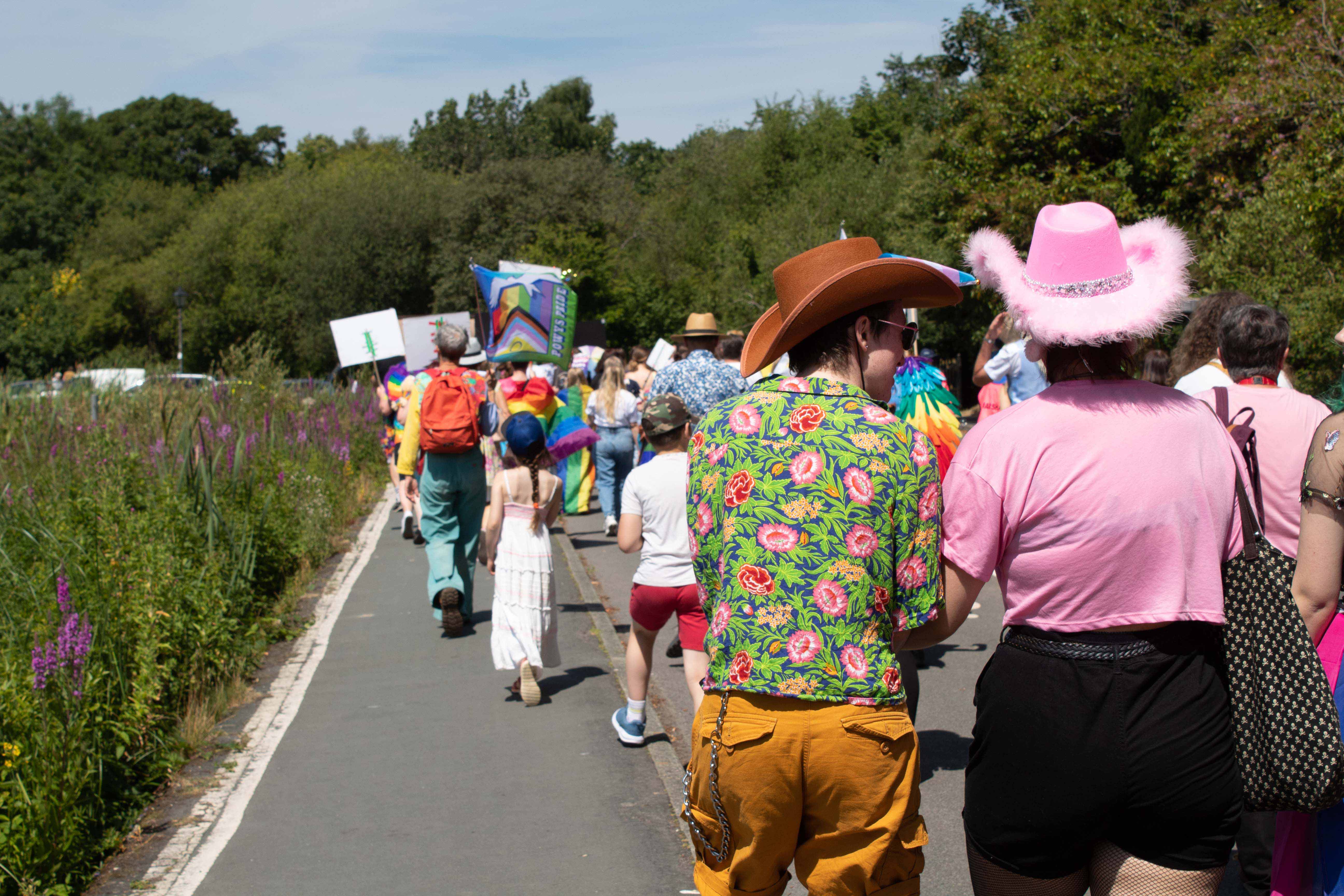
Photography: Documenting Auschwitz & Remembering the Holocaust | Veronika Merkova
Veronika Merkova. Photo: Train Tracks outside the Camp, Auschwitz / Birkenau. Photo, Veronika Merkova
INTERNATIONAL HOLOCAUST REMEMBRANCE DAY ON THE 27TH OF JANUARY TOOK PLACE THIS WEEK TO REMEMBER AND REFLECT ON THE 6 MILLION JEWS AND 11 MILLION OTHERS WHO WERE MURDERED BY THE NAZI REGIEME BETWEEN 1933 AND 1945.
TO MARK THE EVENT, VOICE PHOTOGRAPHER VERONIKA MERKOVA SHARED HER PHOTOGRAPHS AND REFLECTIONS ON VISITING AUSCHWITZ/ BIRKENAU, MEETING A HOLOCAUST SURVIVOR AND DOCUMENTING THE ISSUE OF FASCISM OVER RECENT YEARS IN GREECE.
While travelling around Europe in 2018, I visited Krakow, Poland. It felt impossible not to visit Auschwitz/ Birkenau, a few miles away. I was familiar with the history of the Holocaust from school text books and films like the Schindler’s List. It has also been a very personal matter to me as both my grandparents fought in the Greek resistance against the Nazi occupation, and even lost close family members.
Coming from Greece, a country that in the recent years has been stricken by new forms of fascism, it has been something that has deeply troubled me and which I’ve felt the need to document as much as I can. The Holocaust is a part of human history that must never be forgotten, so I had the urge to visit and document.





Visiting and Photographing Auschwitz / Birkenau
The first thing that made my heart skip upon visiting Auschwitz was the train lines that were leading inside the camp. Having seen this historical “image” from movies and documentaries I thought I’d be prepared for it. There are no words to describe the feeling when walking around this camp.
The Nazis took a Polish army base in the town of Oświęcim and turned it into a multi-site concentration camp that practiced mass murder on an industrial scale. The Holocaust Memorial Museum, estimates that 1.3 million were sent to the camp, including 1.1 million Jews. It was the largest and deadliest of six dedicated extermination camps under Nazi rule.
85% of the people who were sent to Auschwitz were murdered in the concentration camp. Almost 1 million Jews were killed by being gassed, starved, worked to death and even killed in medical experiments. The vast majority were murdered in the complex of gas chambers at Auschwitz II-Birkenau camp.



Auschwitz was actually three camps in one: a prison camp, an extermination camp, and a slave-labour camp. This small camp, Auschwitz I, was reserved throughout its history for political prisoners, mainly Poles and Germans.
In October 1941, Nazis started the construction of Auschwitz II, or Birkenau, a huge concentration camp and extermination complex that included some 300 prison barracks.
Birkenau stretches over 425 acres of bleak landscape. It was overwhelming how massive this place is. The entire Auschwitz camp was staffed by 8,400 people over the course of its operation, recruited to the horror of mass extermination.
The weather was gloomy, cloudy, and cold. It felt fitting to have such weather while visiting a place where millions of people were killed and tortured. The camp was filled with barracks and destroyed buildings everywhere around you. Marble boards were all around to explain what the different areas are that also include photographs of that time which made the experience even more intense.
When I reached the end of the train lines, it was where the main crematoriums and gas chambers were built. Most of them were destroyed in an attempt from the Nazis to cover up their atrocities from the Soviet army. I was worried that I would be too upset to document anything. In the end I felt numb. It was all too much to take in, to comprehend. The feeling of numbness followed me around the whole day. I hope my images can help keep the memory of the Holocaust alive.





The Jewish writer Primo Levi was one of the most famous survivors of Auschwitz, who wrote about his experience and the lessons of the Holocaust in numerous books that should be widely read. This quote, about children being sent to their death, is particularly powerful:
“All took leave from life in the manner which most suited them. Some praying, some deliberately drunk, others lustfully intoxicated for the last time. But the mothers stayed up to prepare the food for the journey with tender care, and washed their children and packed their luggage; and at dawn the barbed wire was full of children’s washing hung out in the wind to dry. Nor did they forget the diapers, the toys, the cushions and the hundreds other small things which mothers remember and which children always need. Would you not do the same? If you and your child were going to die tomorrow, would you not give him [food] to eat today?”
― Primo Levi, Survival in Auschwitz

Meeting The Jewish Holocaust Survivor Iby Knill
While studying Photojournalism at Cardiff University, part of one of my modules was to cover a National Day. I chose the Holocaust Memorial Day and visited an event, the: “Bristol marks Holocaust Memorial Day,” with a civic commemoration on Friday 25 January 2019, featuring a 95-year-old Holocaust survivor as the main speaker. It took place in Bristol City Hall.
The Holocaust survivor and main speaker, Iby Knill, shared her story with the audience along with photos. She was from Czechoslovakia, but after the German Nazi occupation, life became difficult and she fled to Hungary. In 1944, the Nazis invaded Hungary and in the early morning the police – now under Nazi control- raided the place she was staying and she was deported to Auschwitz Birkenau.

“When we arrived, men in striped pyjamas opened the doors and told us to leave the sick, the old and the children.” Iby Knill wrote in 2009. “Men and women were separated. I and four other women – two of them doctors – linked arms and moved past Dr. Mengele. We had arrived in Auschwitz-Birkenau.
We were told to strip, had the hair shaved off all over our bodies and were then pushed into showers.”
It was my honour to participate in this event and hear Iby Knill’s story. As years pass, we will only be able to hear survivors’ voices through our records of them. This is why it is important to document the atrocities of the past and make sure that their stories are not forgotten.

The Threat of Fascism Remains
Unfortunately, this subject is far from irrelevant today. This website has documented the experiences of racism today, especially Islamophobia, and is a painful illustration of how racism that comes from our most senior political figures and institutions filters down into different parts of society with serious consequences. “There’s just so much rubbish that the media, and to be honest, the government is creating about Muslims,” a young Muslim woman, Ayesha, told us. Today, the Muslim, or the immigrant from the Middle East or North Africa, is often the target for racists and fascists.
The path against fascism remains one of resistance. On 7th October 2020, Greeks rejoiced at the news that the leaders of the Neo Nazi party, Golden Dawn, were found guilty of operating a criminal gang of death squads against immigrants and other ‘enemies’ of Nazism, such as leftists and trade unionists. 30,000 people gathered outside of the court to receive the decision. The trial that lasted for more than 5 years is the most significant trial of fascist criminal activity since the Nuremberg trials. It was the tireless efforts of the legal team AND the constant resistance and support of the antifascists whether at the trial, the streets or through counter reporting, that made this conviction possible.
This tradition exists in Wales and Britain too, as this enlightening piece by Glyn Owen highlighted.
Never Again!

Picture reads: “No one can claim anymore that they didn’t know.”


